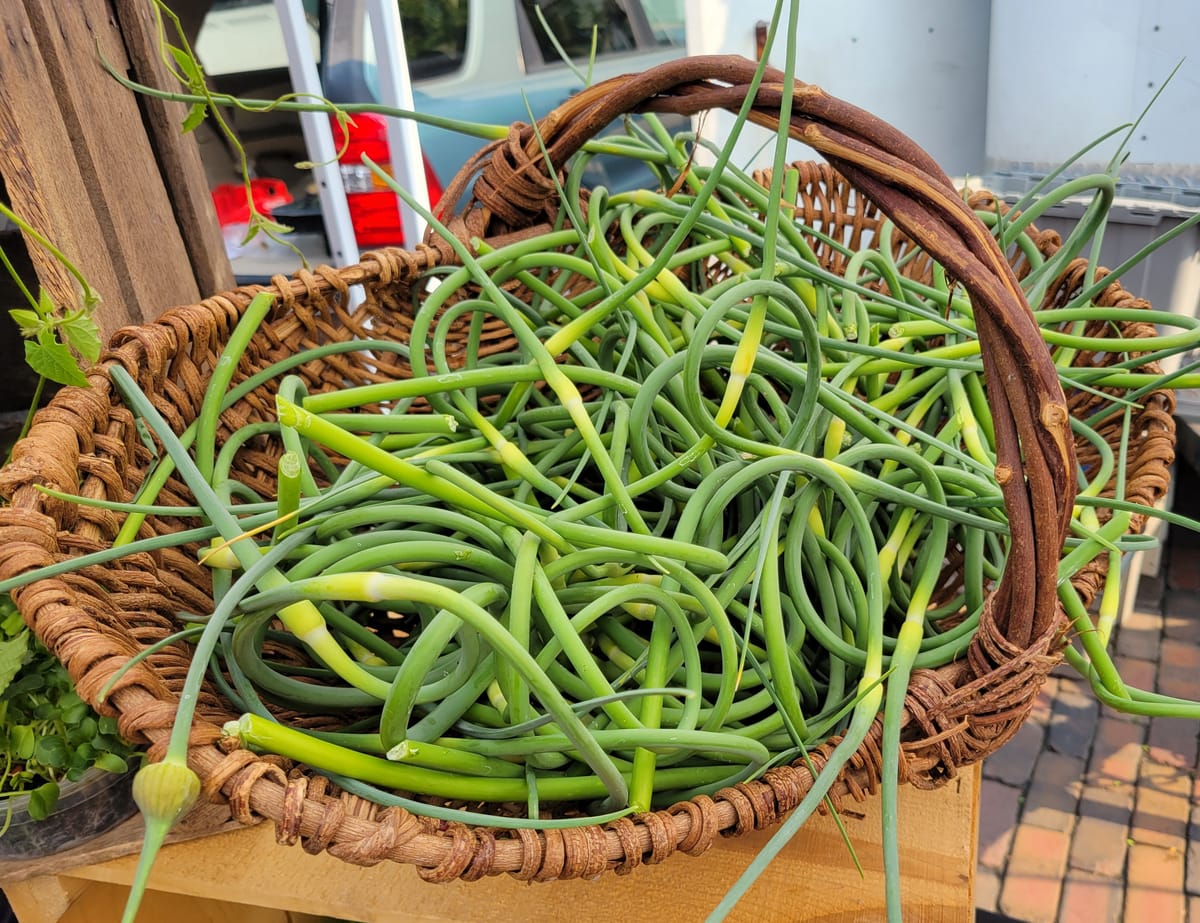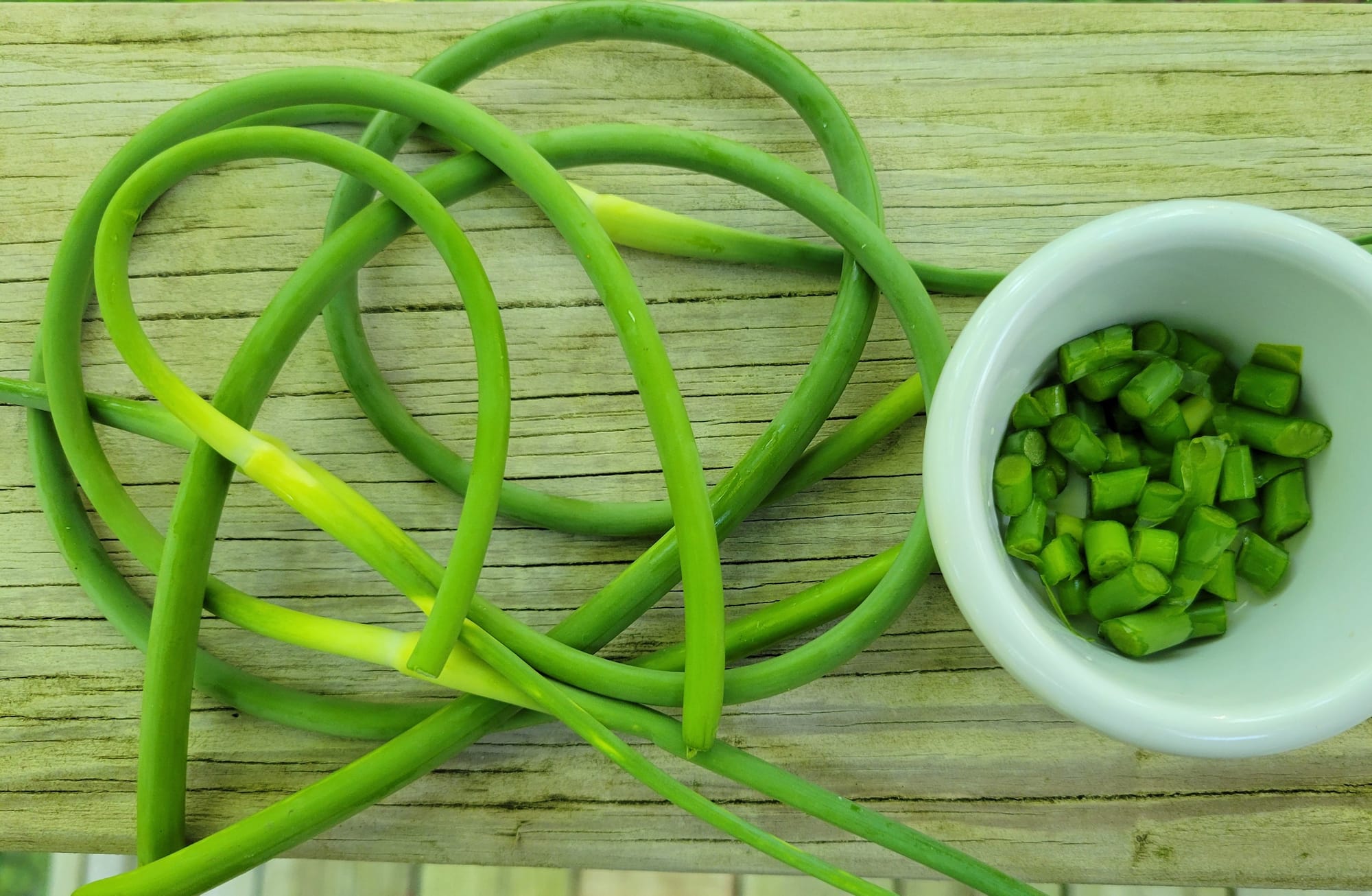On My Plate: Scapes
Scapes are the tender stalk and flower bud of a hard-neck garlic plant.

Two-foot-long curly green wires are the subject of the most questions at Oxford’s Farmers Market this time of year. Most frequently asked are first, “What are they?” And second, “What do you do with them?”
They are called scapes, and they’re the tender stalk and flower bud of a hard-neck garlic plant. A garlic bulb grows underground while the stalk gets the sunshine above ground. The stalk grows straight up for a few inches then curls once or twice before continuing to grow. If left unharvested, a flower eventually blooms at the end of the stalk. However, growers cut off the stalk before flowering so the plant can channel all its energy into producing a larger, more flavorful garlic bulb that will be dug up later this summer — or next year.

As the scape curls, it typically develops a bulge in the middle. This is an unopened flower bud, and it contains garlic seeds. The bulge is edible but not as tender as the rest of the scape.
Scapes were traditionally discarded, but in recent years growers have started to sell them separately, as they have become somewhat fashionable in the kitchen. A scape is much less fiery and assertive than a garlic clove, which is the ultimate purpose of the plant, somewhat akin to a scallion being milder than an onion. And the scape is available for sale by the grower — and of use in cooking — a couple months earlier than the bulb.
Second question: What do you do with a scape? The answer: Use it in almost anything you prepare this time of year. If you’re cooking in a wok or in a frying pan on the stovetop, finely chop a scape and add to whatever else you’re making — spaghetti sauce, stir-fry, omelet, chopped veggies or whatever.

If you’re grilling something, brush a couple of whole scapes with oil, and grill them for a couple of minutes. To avoid burning them, place them on foil. If you wrap vegetables in foil before placing them on a grill, add scapes. Sprinkle on top of a hamburger instead of onions.
If you’re baking something in the oven, chopped scapes can be added to the pan, or whole scapes can be placed on a greased cookie pan and roasted at 350 degrees for 20 minutes. To improve the roasting, trim the scapes so that they lie flat on the pan.
Pesto is an especially good use for a large supply of scapes. Pulse coarsely chopped scapes in a food processor, add kale or other leafy greens if desired and moisten with olive oil. Add to the processor some nuts, such as walnuts or pistachios, and some Parmesan cheese. Season to taste with lemon, salt and pepper.
Scapes freeze well. Unlike most green vegetables, scapes retain their attractive texture when thrown from the freezer into the pan or oven. They will also keep well for a couple of weeks in the fridge.
Bon Appétit calls scapes “the best veg you’re not cooking yet.” “Scapes are to garlic as fusilli is to rigatoni: the crazy college buddy who never really embraced adulthood,” writes Carolyn Cope in Serious Eats. I have no idea what this means.
The scape season is very short, so if they are still available grab them as soon as you see them, as we await the availability of local garlic bulbs later this summer.
James Rubenstein is president of the Board of Directors for the Oxford Free Press and professor emeritus of geography at Miami University.




